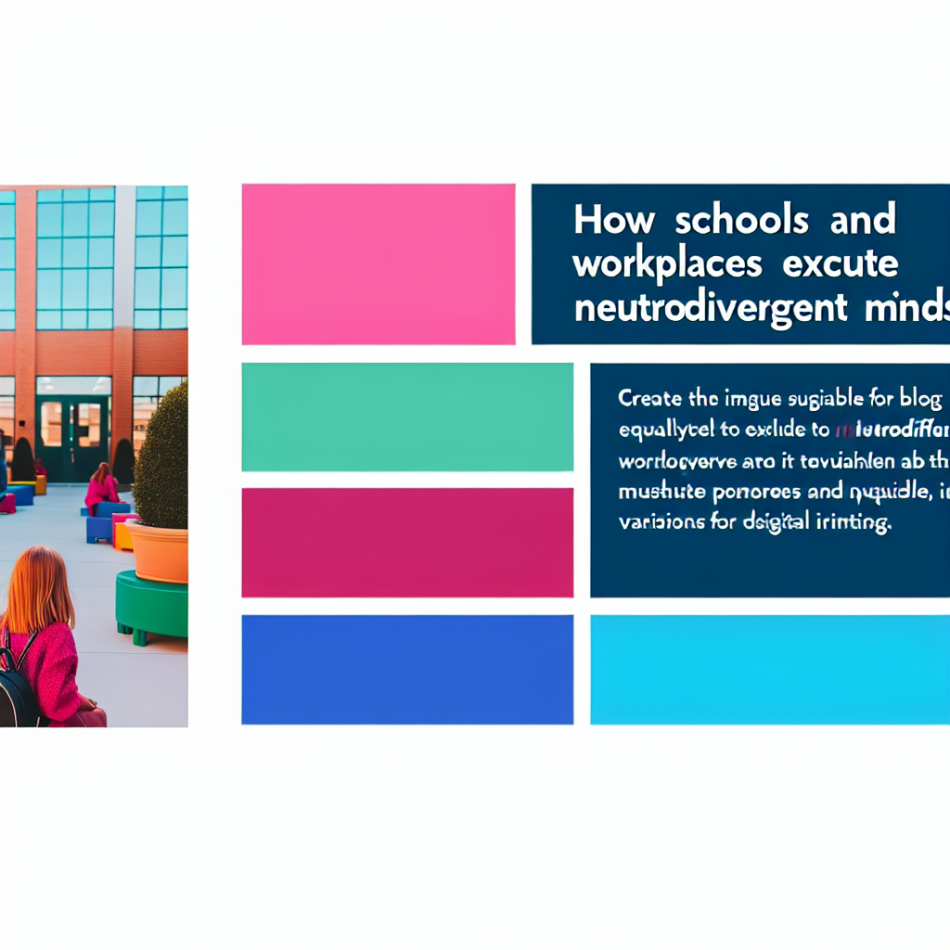How Schools and Workplaces Exclude Neurodivergent Minds by Designing for a ‘Default Brain’
From fluorescent-lit classrooms to open-plan offices, many institutions are structured around a narrow idea of how people think, learn, and work. This ‘default brain’ assumption—often prioritising neurotypical traits like linear thinking or sensory tolerance—excludes those with ADHD, autism, dyslexia, or other neurodivergent conditions. This article explores how rigid systems alienate diverse minds and what inclusive redesign could look like.
The Myth of the ‘Default Brain’
The concept of a ‘default brain’ stems from historical norms that equate productivity and intelligence with specific cognitive styles. Neurotypical traits—such as sustained focus in quiet environments, comfort with verbal instructions, or ease in social collaboration—are often treated as universal. Yet, an estimated 15-20% of people are neurodivergent, meaning their brains process information differently. When institutions design for a hypothetical ‘average’, they inadvertently create barriers for those outside this narrow mould.
Classrooms Built for Conformity
Traditional schooling often prioritises rigid structures: timed exams, rows of desks, and lecture-based teaching. For neurodivergent students, these environments can be alienating. For example:
- Sensory overload: Fluorescent lighting or noisy classrooms overwhelm autistic students or those with sensory processing disorders.
- One-size-fits-all pacing: Timed assignments penalise dyslexic learners or those with slower processing speeds.
- Social demands: Group projects without flexibility isolate students who struggle with unstructured peer interaction.
Such systems equate compliance with capability, sidelining those who thrive with hands-on learning, movement breaks, or solitary focus.
Workplaces That Reward Masking
Many workplaces replicate these exclusionary patterns. Open-plan offices, rigid 9-to-5 schedules, and emphasis on ‘team fit’ often disadvantage neurodivergent employees. Consider:
- Auditory distractions: Noisy environments reduce productivity for those with ADHD or auditory processing differences.
- Implicit communication rules: Unwritten norms around networking or eye contact disadvantage autistic individuals.
- Presenteeism over output: Valuing visible busyness over actual results harms those who work best in bursts or remotely.
Neurodivergent employees frequently expend energy ‘masking’—hiding their needs to fit in—leading to burnout and attrition.
Who Bears the Cost of Exclusion?
The exclusion of neurodivergent individuals isn’t just a moral failing; it has tangible costs. Students may disengage, leading to higher dropout rates, while workplaces lose talent and innovation. Mental health suffers, too: the pressure to conform heightens anxiety and depression among those who cannot meet neurotypical expectations. Societally, we miss out on diverse problem-solving approaches—think pattern-based thinking in tech or hyperfocus in creative fields.
Redesigning for Cognitive Diversity
Inclusive design benefits everyone. Schools and workplaces can adopt:
- Flexible environments: Quiet zones, adjustable lighting, and hybrid learning/working options.
- Universal Design for Learning (UDL): Offering multiple ways to engage, like visual aids, oral exams, or project-based assessments.
- Neurodiversity training: Educating staff on accommodating differences, from sensory needs to communication styles.
Companies like Microsoft and SAP have pioneered neurodiversity hiring programmes, showing that tailored recruitment and mentorship boost innovation and retention.
Conclusion: Beyond the ‘Default’—A Call for Systemic Change
Designing for a ‘default brain’ perpetuates inequality, excluding those whose minds diverge from outdated norms. Schools and workplaces must shift from enforcing conformity to embracing flexibility—whether through sensory-friendly spaces, asynchronous learning, or output-focused work policies. Inclusion isn’t about charity; it’s about recognising that cognitive diversity drives progress. By challenging the status quo, we create systems where everyone can thrive, not just survive.
